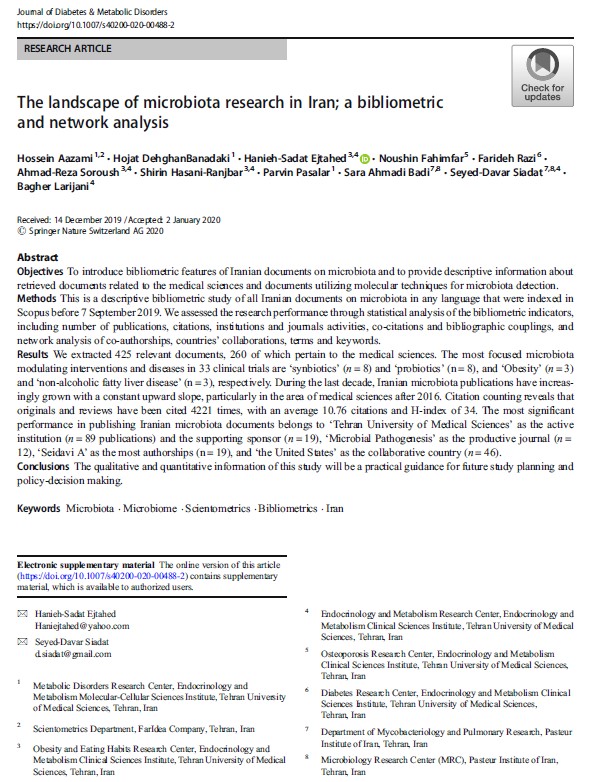Journal of Diabetes & Metabolic Disorders
Authors: Hossein Aazami, Hojat DehghanBanadaki, Hanieh-Sadat Ejtahed, Noushin Fahimfar, Farideh Razi, Ahmad-Reza Soroush, Shirin Hasani-Ranjbar, Parvin Pasalar, Sara Ahmadi Badi, Seyed-Davar Siadat & Bagher Larijani

To introduce bibliometric features of Iranian documents on microbiota and to provide descriptive information about retrieved documents related to the medical sciences and documents utilizing molecular techniques for microbiota detection.
This is a descriptive bibliometric study of all Iranian documents on microbiota in any language that were indexed in Scopus before 7 September 2019. We assessed the research performance through statistical analysis of the bibliometric indicators, including number of publications, citations, institutions and journals activities, co-citations and bibliographic couplings, and network analysis of co-authorships, countries’ collaborations, terms and keywords.
We extracted 425 relevant documents, 260 of which pertain to the medical sciences. The most focused microbiota modulating interventions and diseases in 33 clinical trials are ‘synbiotics’ (n = 8) and ‘probiotics’ (n = 8), and ‘Obesity’ (n = 3) and ‘non-alcoholic fatty liver disease’ (n = 3), respectively. During the last decade, Iranian microbiota publications have increasingly grown with a constant upward slope, particularly in the area of medical sciences after 2016. Citation counting reveals that originals and reviews have been cited 4221 times, with an average 10.76 citations and H-index of 34. The most significant performance in publishing Iranian microbiota documents belongs to ‘Tehran University of Medical Sciences’ as the active institution (n = 89 publications) and the supporting sponsor (n = 19), ‘Microbial Pathogenesis’ as the productive journal (n = 12), ‘Seidavi A’ as the most authorships (n = 19), and ‘the United States’ as the collaborative country (n = 46).
The qualitative and quantitative information of this study will be practical guidance for future study planning and policy decision making.